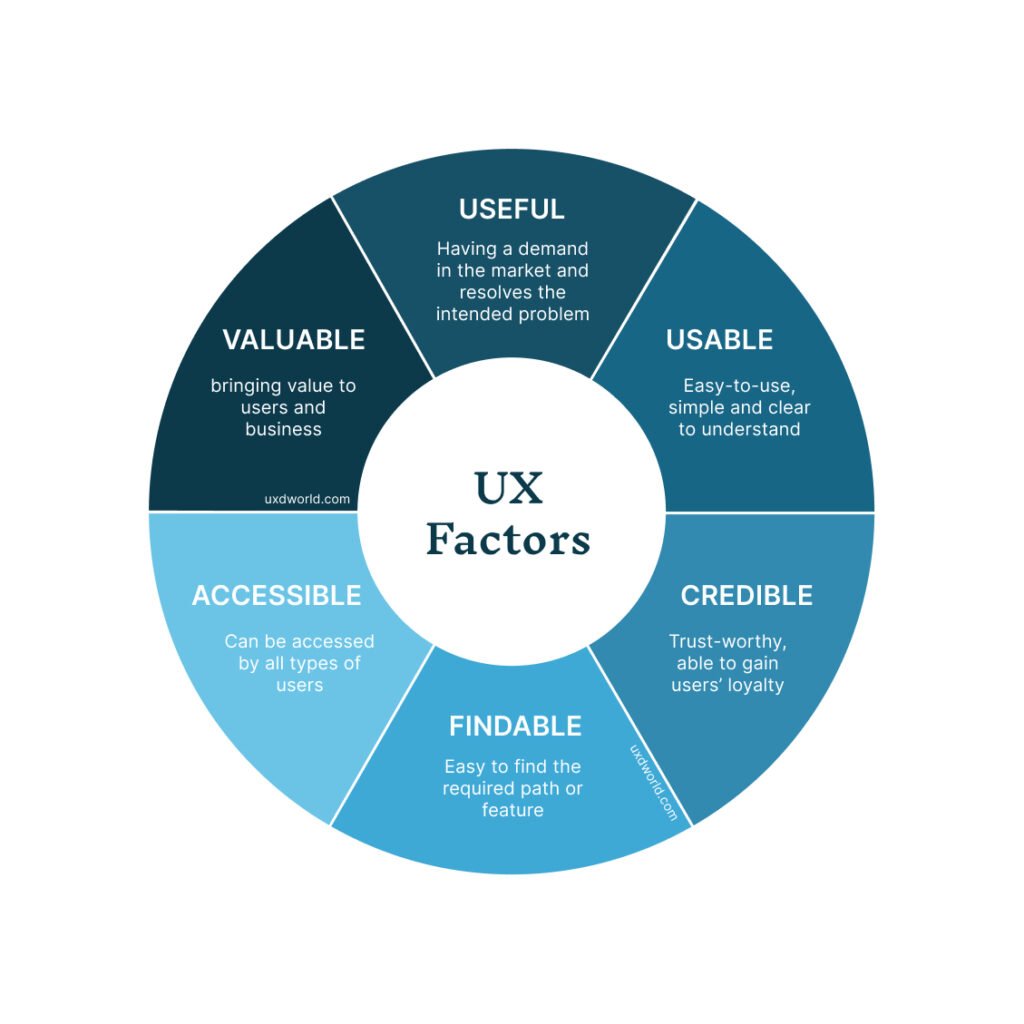Last Updated on June 8, 2024 by UX World
User experience (UX) design defines how a user feels while interacting with a product. During the past two years, everything has changed due to COVID. The majority of daily life operations are shifted online. This created a huge demand for UX design and thereby UX designers.
At the same time, it has increased the competition in the UX design field. Several influencing design factors need to be considered when designing a product. They will attract users and make a usable product that helps them achieve the desired goals.
UX Factors
Below are a few important UX factors to consider while designing your products’ user experience.

1. Useful
Your product should be useful for people. In other words, there should be a demand for the product in the market.
You can figure this out by doing product validation before building the product. Product validation will help you find whether the product you want to create is a market fit. If the product is in demand, you can start working on the development and design of that product.
Without product validation, you may end up designing a product that isn’t required in the market, and not useful for the audience.
2. Usable
An easy-to-use product is a usable product.
The first step to creating an easy-to-use product is understanding who your users are, what they need, what they expect, and how they behave. To know your users, meet them, conduct interviews, and perform surveys.
This will help you understand what your users want to achieve from your product. And you can provide the required solution that works efficiently for users.
3. Credible
Be careful of your credibility because once you lose your credibility, no one will trust you.
For a UX designer, the credibility lies behind the successful designs that users love to use. Nowadays there is tough competition in the UX design field. You will lose users if you don’t develop a product that meets their requirements.
4. Findable
Findability is all about organizing the information so it becomes easier for the user to understand and follow.
Let’s take an example of a project report. In the project report, you will see a sequence. First comes the abstract, then we have sections like table of contents, introduction, literature review, a detailed discussion of the project work, results achieved, and conclusion.
The same applies to UX design. When you design a website, you will arrange UI elements and content according to their priority. The most important elements will be placed at the top so the users can find them easily without lag or confusion. This is all about findability.
5. Accessible
Accessibility is important for a successful product. Accessibility is all about access to the product to all types of audiences.
This involves all types of people including the ones with disabilities like hearing or vision problems. So while designing a product, consider facilitating all target user types.
6. Valuable
The product should bring value to its users as well as to its business and organization. Remember the market is competitive. A 100-dollar product that can solve a $10,000 problem is better than a $10,000 product that can solve a 100-dollar problem.
Conclusion
Building a product that satisfies your users is the job of a UX designer. Consider the mentioned UX factors when designing the product experience. Products that are useful, usable, findable, credible, accessible, and valuable are in high demand and help you attract and retain your customers.
Want to Learn UX Design?
- Try Interaction Design Foundation. IxDF offers online design courses that cover the entire spectrum of UX design, from foundational to advanced level. As a UX Design World reader, you get 25% off your first year of membership with the IxDF.
- The UI/UX Design Specialization from Coursera brings a design-centric approach to user interface and user experience design and offers practical, skill-based instruction centered around a visual communications perspective. By learning this Design Specialization, you can design high-impact user experiences for your customers.
Thanks for reading.
Subscribe for more related articles at UX World.
If you have any questions, contact us here: Facebook | YouTube | Twitter | Instagram | Linkedin


